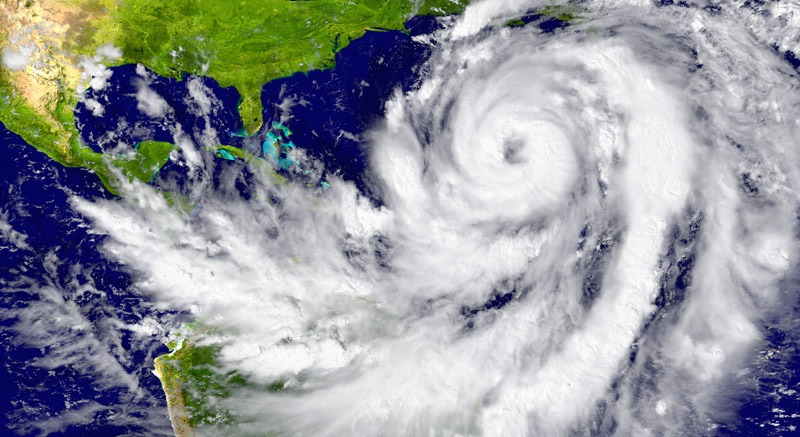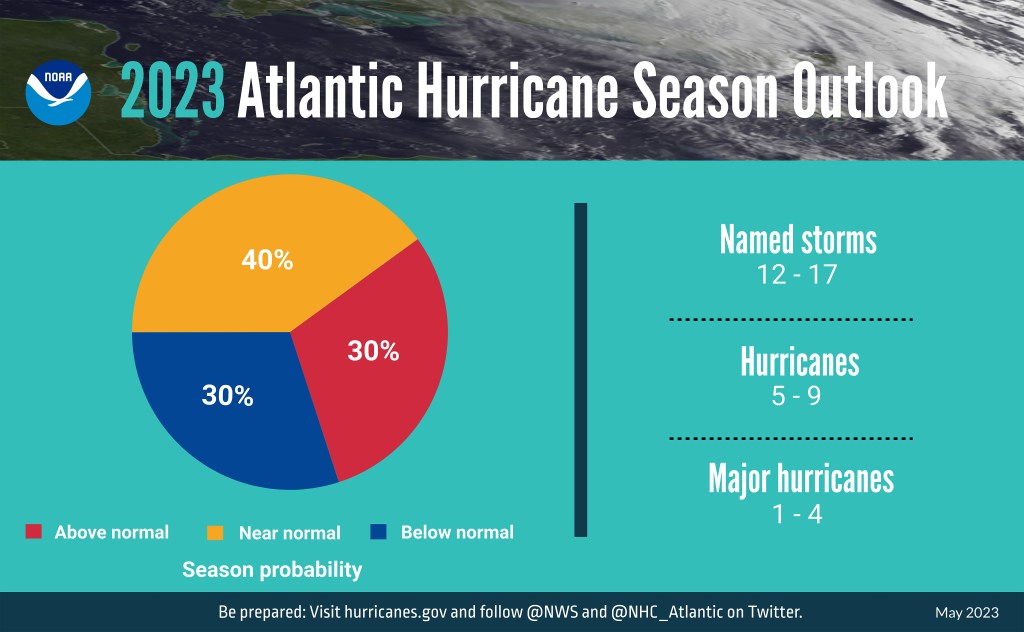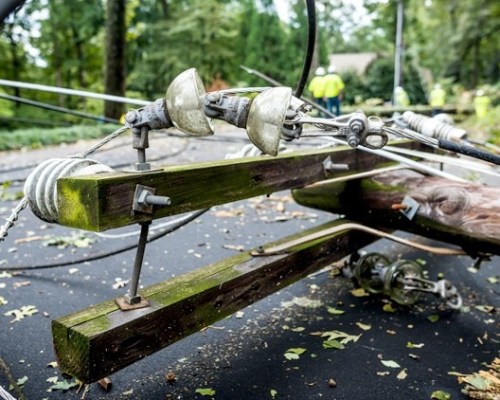A $100 Billion Problem: Hurricane Prep Steps to Keep Your Operations Powered
Very few factors have the ability to shutter business operations like the loss of power, and since 2001, more than 80% of power outages can be attributed to severe weather. Unfortunately for businesses across the southeastern U.S., hurricanes and other major weather events will continue to worsen, and many organizations don’t yet grasp how significant this threat is to their business.
A concerning trend: A recent study conducted by the First Street Foundation found that the proportion of storms categorized as Category 3 or higher has increased. In addition, these dangerous weather events are tracking farther northward and wreaking havoc on the mid-Atlantic.
Why it matters: Their research indicates that in the next 30 years an additional 13.4 million properties will face tropical cyclone-level wind risk that do not currently face such risk. Increased storm risk doesn’t just mean loss of property, but severe weather can create power interruptions that result in over $100 billion in losses and can disrupt critical emergency response.
Addressing the risks: As a result, having the right infrastructure and plan in place for energy resilience has become a crucial measure for organizations across the Southeast. Businesses like Duke Energy Sustainable Solutions (DESS) are working to help keep the lights on before, during and after severe weather strikes.
Going deeper
In the immediate term, the National Oceanic and Atmospheric Association (NOAA) has forecasted a range of 12 to 17 total named storms (winds of 39 mph or higher) for 2023. Of those, five to nine could become hurricanes (winds of 74 mph or higher), including one to four major hurricanes (Category 3, 4 or 5; with winds of 111 mph or higher). NOAA has a 70% confidence in these ranges. Even though the number of high-intensity storms might not appear extreme, every storm brings uncertainty.
The number of harsh storms is on the rise, and beyond the possible loss of property, businesses in affected areas across the Southeast face another massive concern – power outages. Weather-related power outages increased by roughly 78% between 2011-2021 compared to 2000-2010. And in today’s business world, reliable power is more important than ever. Even a brief interruption can mean loss of product, time and revenue.
The Department of Energy estimates that outages cost businesses an eye-popping $150 billion a year, so having a plan for energy resiliency when severe weather threats continue to grow is critical. How are businesses addressing this massive liability? Backup generation.
Since 2015, DESS has saved customers during utility power outages 1,628 times across the country. More than 300 of those saves occurred in 2022 in Florida and North Carolina alone. But these saves aren’t magic. Keeping operations up and running takes risk analysis and planning with businesses, the right backup generation equipment, and a careful plan of action when extreme weather hits.
This series of proactive steps plays out with each major event. When Hurricane Idalia recently threatened the Florida coast, Duke Energy’s response team jumped into action.
 Preparation and Response to Hurricane Idalia
Preparation and Response to Hurricane Idalia
“As we saw with Hurricane Ian, it only takes one hurricane to cause widespread devastation and upend lives. So regardless of the number of storms predicted this season, it is critical that everyone understand their risk and heed the warnings of state and local officials.” FEMA Administrator, Deanne Criswell
When Hurricane Idalia threatened the southeastern U.S. in the last week of August 2023, the Duke Energy Services teams began emergency response preparations. The primary focus of the emergency response was focused on Florida, where the storm which was first identified as a tropical storm would make landfall as a Category 3 hurricane.
Once the tropical storm was identified, Duke Energy’s hurricane prep teams were established and preparation work initiated. Long before Idalia neared landfall, all sites in Florida served by DESS backup generation systems were tested, serviced and monitored. In addition, all local vendors were also notified and prepped, and resources were staged in areas predicted to be affected. In the days just before landfall, all generators were checked for fuel and refueled, if necessary. All sites were verified that backup generators were ready and available to provide service, if needed. Once the preparation steps were done, Duke Energy monitored weather services for all updates to respond accordingly.
With these measures in place, multiple customers proactively shifted to storm response power while the storm made landfall even though connection to the utility was never lost. For another business, though, the backup resiliency system was needed as power was lost. Because of the preparatory steps, the backup generation system operated as designed and the customer was able to operate on backup power for more than 48 hours without interruption.
Actions taken in preparation, during and in the aftermath of Hurricane Idalia not only gave DESS customers peace of mind, but ensured they could keep their operations going and continue to serve their communities in the midst of a natural disaster.
When Duke Energy’s response teams prepare for a hurricane, our crews receive pages of safety information discussing working in flooded conditions, dealing with wildlife, and driving during and after storms. A lot of planning goes into getting ready for these storms. Below is a list (not fully inclusive) of some of the pre-storm prep that our Energy Services response team reviews:
- Safety first – develop safety messages, confirm personal protective equipment availability and evaluate vehicles
- Develop customer contact and communication plans
- Establish command center and staffing plan
- Document vendor contact information
- Inspect or remotely test all sites and complete any corrective actions
- Identify additional resource and material needs
- Secure equipment, fuel, vendors and technicians
- Establish emergency response plan
- Create list/map of sites and then track site status and monitor fuel
- Fuel all vehicles, charge phones and battery backups
- Secure strategic hotel rooms and staging plan
Storm tracking is a vital part of our hurricane prep work, and we closely follow Duke Energy meteorologists’ forecasting. A resource plan is then put into effect and lists our Energy Services customers along with the site address, primary Energy Services contact, and the type of backup power that is at their facility. The resource plan also lists the shifts of emergency contacts (available 24/7). During pre-storm preparation, all sites and assets are inspected and tested, and all fuel is topped off. Our customers are all contacted, and any corrective actions are taken at customer facilities if issues were found during pre-site inspection. Energy Services then secures and strategically stages equipment and technicians, in addition to fuel tankers and blocks of fuel. Throughout the duration of storm impact, the command center is managed around-the-clock, facility systems are continuously monitored and fuel levels are tracked.
A Summary of Storm Impact report is created, and customers are notified of any power outages and “saves” (when the backup power is running during a utility power outage).
A Post-Storm Action Plan is created, and site inspections occur again to determine any maintenance or corrective action needed. Finally, the Energy Services team has a post-storm meeting to discuss follow-up with customers, lessons learned and an enhancement action plan.
Being Prepared Means Maintaining Power
As the strength and frequency of storms continue to grow, so do the threats presented to your operations.
“As we saw with Hurricane Ian, it only takes one hurricane to cause widespread devastation and upend lives. So regardless of the number of storms predicted this season, it is critical that everyone understand their risk and heed the warnings of state and local officials. Whether you live on the coast or farther inland, hurricanes can cause serious impacts to everybody in their path,” points out FEMA Administrator Deanne Criswell.
The cost of a power outage is unique to your business, but the risks are universal. DESS is here to support your energy resiliency with the appropriate solutions. Installing and utilizing one or more on-site generators and fuel storage tanks greatly reduces the risk of power failure and the consequences of downtime.
At DESS, we provide long-term backup power and electrical infrastructure support for large commercial, industrial and institutional customers across the country. We design, build, own, operate and maintain these systems for customers to keep their businesses running smoothly in the event of power outages caused by a variety of reasons – including hurricanes.




